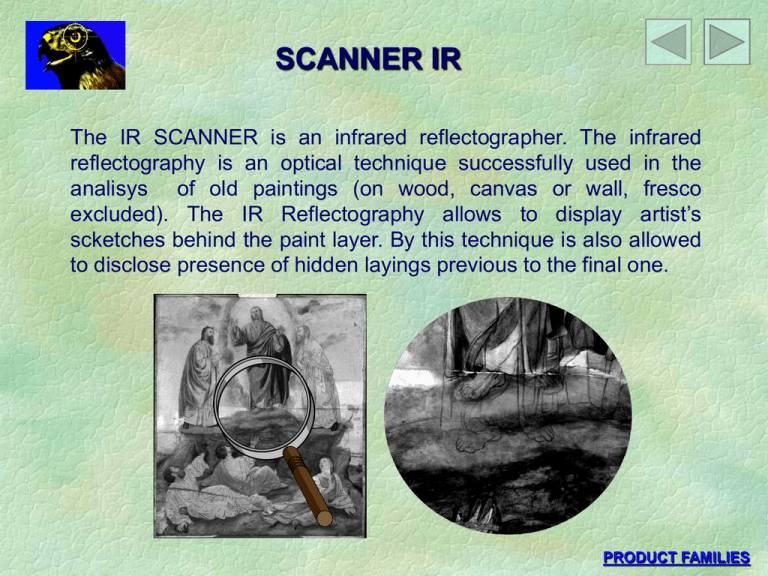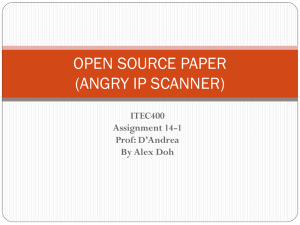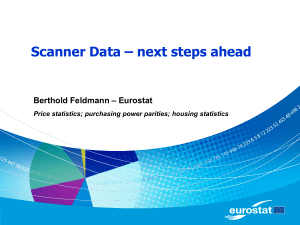scanner ir
advertisement

SCANNER IR The IR SCANNER is an infrared reflectographer. The infrared reflectography is an optical technique successfully used in the analisys of old paintings (on wood, canvas or wall, fresco excluded). The IR Reflectography allows to display artist’s scketches behind the paint layer. By this technique is also allowed to disclose presence of hidden layings previous to the final one. PRODUCT FAMILIES SCANNER IR WHAT IS THE IR REFLECTOGRAPHY It is an optical technique to analyse paintings. It works in the so called Near InfraRed wavelengths (N.I.R.), that’s between around 0.8 mm and 2.5 mm. Its major use is the detection of details hidden underneath layings, among which there is the underdrawing. SCANNER IR A COMPARISON BETWEEN TECHNOLOGIES CCD NIR camera, working from visible to 1.1 mm good resolution, but unsuitable to see underneath many type of pigments VIDICON camera (PbS), working from visible to 2.2 mm both resolution and contrast rather scarce good behaviour with the majority of pigments SCANNER IR, working from 0.9 mm to 1.7 mm insuperable resolution very high contrast excellent visibility underneath any kind of pigments SCANNER IR BASIC FEATURES The IR SCANNER combines to the good visibility achieved by a Vidicon tube an excellent contrast, a more extended tone range and a very high spatial resolution, as it is briefly reported below. Spatial Resolution: 4 pixel/mm (16 pixel/mm2), equal to 101.6 dpi Tone Range: 4096 levels of gray Working Wavelength: 900 ÷ 1700 nm Acquisition Area: 1 m2 Dimensions of digital image: 4000 * 4000 pixel SCANNER IR OTHER IMPORTANT FEATURES Vertical Scan Speed ~ 0.2 m/s Distance between optical head and painting: ~ 150 mm Image Format: RAW 16 bit Increment of vertical stroke by a rigid module on Y axis, to scan areas as tall as 2 m, by simply moving initial position of the optical head Use of a standard notebook as PC; (this data immediately informs about the total time of acquisition: for example 6 hours for 1 m2 area) (for reflectograms relevant to 1 m2 area, the image dimension is ~ 32 MB) SCANNER IR THE COLOUR HEAD MODULE (RGB) It is an element made of three detectors working at the wavelengths of the Red, the Green, the Blue. It allows acquisition of three images in the visible, which will be then processed by a dedicated graphic software which will make up one colour image. The Optical Head, equipped with the RGB Module, therefore acquires both the IR reflectogram and the colour image. Since these two images are perfectly aligned and have same spatial resolution, they are perfectly superposable. This is absolutely impossible with traditional colour images, because of their optical distortion and of scarce optical resolution, comparing to an IR reflectogram. The dimension of an RGB image, stored in RAW format at 16 bit, and relevant to 1 m2 is about 96MB. SCANNER IR THE PORTABLE VERSION - modularity - lightness - ergonomic design - very fast decomposability - limited number of modules - modules portable in wheeled containers 18002500 mm (*) FALCON has designed and manufactured a convenient portable version of the IR SCANNER, having the following features: SCANNER IR from Reflectogram to ..... RGB image ! Matteo di Giovanni Madonna col Bambino e quattro Santi (detail - Duomo of Pienza) SCANNER IR Maddalena - Dutch School -XVI century (London - National Gallery) from IR to RGB SCANNER IR Giovanni Bellini - Madonna col Bambino detail of underdrawing for the Jesus’ head detail of underdrawing for the hands SCANNER IR Giorgione La Tempesta pentimento under Antenore’s figure








